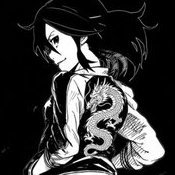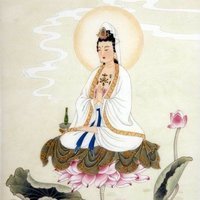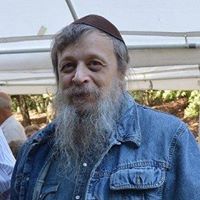Search the Community
Showing results for 'Dream'.
Found 30 results
-
You dont need to enter or re-enter a dream to see that , If you need to be shown the ' complex interaction between the non-dual and the manifested duality' just OPEN YOUR EYES and look around you ... at life .
-
Is it possible for the non-dual to achieve some development or purpose by manifesting then penetrating a duality? Are there stages/progressions within non-duality that are exercised in a duality? More simply: why do humans exist? Not how, but why! Long ago I had a dream that I later re-entered to experiment within. The dream showed me a complex interaction between the non-dual and the manifested duality. I knew intelligences that were within both.
-
Of course you can. Visualize this 3D timeline coming from behind you and extending out in front. Just move your attention back along the timeline to the time of the dream and step into the energy field. Train a friend to do the timeline thing and get them to do it with you There is of course development of the ability to visualize. I have had some years of visualizing so that that particular inner plane sense is somewhat developed.
-
Wait, ... you go back in time? (can you really time travel?) And step into the dream again and do experiments to test your hypotheses? Sometimes you do that with a friend watching the scene IN the dream? That is one heck of a friend to be able to watch the scene in your dream. Sorry, just about everything you said in that posts makes me wonder why I can't go back in time and have my friend watch me in my dreams. What is wrong with me?? Sterling said, "But when you finally woke up you would dismiss them outright." So time travel to the past isn't possible?? LOL
-
Usually I go back in time and step into the dream again and do experiments to test my hypotheses. Sometimes I do that with a friend watching the scene in the dream.
-
The science that pointed to the brain being where the experience of being originates is known to be flawed, and has been for many years, so yes. Here is a nice article on this topic: https://tricycle.org/article/six-questions-b-alan-wallace/ ...or, if you are more science minded: https://pmc.ncbi.nlm.nih.gov/articles/PMC9490228/ - Setting that aside for a moment - if you were asleep and based your reality on experiments done in your dream, your experiments MIGHT have some sort of seeming circular reality, but when you finally woke up you would dismiss them outright. The same goes here - it is entirely possible to "wake up" from the dream of duality and see that there is a deeper, more real level of reality that includes and suffuses the reality you already experience.
-
It wouldn't occur to me, but I don't remember either all that well. Flatliners was about a memory of a trauma Kiefer Sutherland inflicted on someone else as I recall? -- the movie creator's dream of a remorseful perpetrator? Alas, memories of trauma buried deep in the unconscious are usually uniquely personal and concern the trauma inflicted on us... if we survive it that is. Perpetrators, even those who are capable of remorse, seldom get traumatized on the unconscious level, hurting someone else doesn't rewire one's neurophysiology -- in most cases they either feel nothing in particular (no mirroring neurons operational, so they can't relate to the feelings of those they hurt) or actually enjoy it (10% of the population, aka the sociopaths). But like I said, my memory of the movie is rather dim. And from Travels I only remember that Crichton hated medicine and his father, both for a good reason.
-
In my experience The Source of All (the Dao) has a manifesting impulse and a non-manifesting impulse - hence the dream I had demonstrating both. Many humans (and other soul-bearing species) can access both "soul-bearing" is used in a non-technical sense
-
I once had a dream that demonstrated relationships and intelligences present in that process. On waking I re-entered the dream space and did experiments to test the reality of what I was shown
-

Buddhist/Daoist Views Related to Xing/Dharmakaya(Split From What do you think about Neidan(內丹)?)
stirling replied to SodaChanh's topic in Daoist Discussion
Yeah... he'll want to keep it in the tradition, I would imagine. No surprise there. This is often very much the case with all of the original Tibetan teachers that escaped China, or were trained by them. I can't tell from your post, and you may know this, but the eventual goal of Dream Practice is not lucid dream, but rather being awakened in all moments including sleep. This is something that, in my experience, sometimes naturally happens on (or just after) retreats. Lucid dreaming would be more of a siddhi than a desirable path milestone. Do you mind if I ask: Do you know experientially what is meant by Rigpa, or the "nature of mind"? This isn't intended as a "gotcha", it might not be something that arises in the traditions you have pursued. -

Buddhist/Daoist Views Related to Xing/Dharmakaya(Split From What do you think about Neidan(內丹)?)
Antares replied to SodaChanh's topic in Daoist Discussion
I talked to him personally and asked him a few questions. When I asked about Ming methods ih his teaching he refused to answer my question. Then I asked him about his opinion on Taiji methods and whether they might correlate and can go along with Dzogchen practice. His answer was "you should quit it if you want to practice Tibetan methods I teach". I have never had conversation with him after that and have no desire to be honest. In my opinion (and from Daoist perspective) one should not do any Dream Yoga until they are good at Ming methods and have their yuan jing full. Even if it is full the dream practice is somewhat different in Neidan, there is nothing like "lucid dreaming". But he held this seminar to complete beginners. I am not sure his teaching is authentic Tibetan Buddhism, probably some modern variation of it. Also I was a member of that group for awhile and I did not see there any Ming related methods. -
Nope, the idea was not an elitist club, anymore than a tennis club that wants its members to be tennis players rather than football players bent on preaching to them about the correct shape of the ball they should be playing with. Or a football club that tries to stop tennis players from running around the field swinging their racquets at the goalkeeper. TBH that idea was born out of sheer frustration... a pipe dream... something along the lines of that tree house rule:
-
20 or 200 or 2000, I don't think it will help. What might help would be applying a special rule to that forum: only those who could reference their neidan teacher and lineage would be qualified to post. Pipe dream of course. But what passes for neidan discussions otherwise is akin to a plumber teaching a neurosurgeon that the internal carotid arteries supplying blood to the brain should be tackled exactly like the water pipes supplying water to the toilet. After all both carry fluid (or as the case may be in current neidan discussions on the board, "breath"), and therefore there's absolutely no reason to call a neurosurgeon when one needs to regulate blood supply to the brain -- a plumber is fully qualified.
-
If you are interested in how west and east converge on Daoism, try this book Dream Trippers Global Daoism and the Predicament of Modern Spirituality David A. Palmer and Elijah Siegler https://press.uchicago.edu/ucp/books/book/chicago/D/bo26692000.html
-
Yes I can still function without thinking. I've noticed that there are many layers to consciousness, and a variety of thoughts. I still occasionally get some, but I don't actively use my mind and inner voice. Often I hear other voices say things. I have very vivid, realistic dreams. The other day I dreamed I was part of a group of people who committed themselves to advancing life on Earth. At the end of my dream, a voice said "there is nowhere as exciting as this planet"
-
Hello, I am just an armchair magician and have never had the time or space to practice. I have only performed a ritual once in my entire life, about entering someone’s dream and I don’t want to talk about it. My view of magic emphasizes practicality as I am influenced by Stephen Skinner’s rigid experimental approach, which tends to offend many people. I mostly read old translated grimoires on spirit summoning and talisman making (Stephen Skinner, Joseph Peterson, etc). For astrology, I read works by Christopher Warnock and John Michael Greer, who cover electional astrology very well which is extremely useful for talisman making. For Kabbalah, I read Israel Regardie and David Rankine, as well as Mark Rasmus and Bob Smith’s stuff on Kabbalistic letter magic from Franz Bardon method. "Was the astrology used in conjunction with that ( to decide 'when' to specific rituals or processes ) or for other purposes ? " Yes astrological timing is extremely important.
-
Not sure what this is all about but I was referring to projecting outside the physical body (OBE, out of body experience) either consciously or unconsciously. One can meditate on the knowledge of dream or dreamless sleep. Yes but nothing to do with AP/OBE. Basically meditating non-stop in layman's terms.
-
In my experience this is 100% the case. I have had a number of nights where I watched myself sleep and dream as a "witness" rather than a participant. It is absolutely possible to take the bare awareness of a practice like shikantaza or dzogchen and have that be present when asleep. We are ALWAYS just awareness. This is obviously the premise of Tibetan dream yogas, which I have researched. My success with inducing this is non-existent, but when it has occurred it has (2 out of 4 times) been after being on retreat. Gerard, I don't think you read the text properly, we aren't talking about the conventional way of thinking about "astral travel". This isn't a siddhi. In fact, Patanjali would absolutely agree that it is possible to see that reality is dream-like (or "a dream") in both waking and sleeping. Siddhi's are only distracting for those that would use them to gratify attachment or aversion, as you suggest. They will also occur naturally of their own accord, without being sought, as the belief in the solidity of "reality" is eroded.
-
Here is ho Mingyur Rinpoche puts it: What is perfect is the essence of every sentient being. The jiva is the relative deluded individual. The summation is usually "Brahma satyam, jagan mithya, jivo brahmaiva naparah." Brahman is real, the world is illusory, the essence of the jiva is the essence of Brahman. A more radical Vedantin along the lines of Gaudapada might say there is no issue because suffering is illusory, like a dream. The true self is safe and sound as always, so the solution is not to improve the dream, but to wake up the dreamer.
-
Alexander Blok - 1899 ______________________________ To where Heaven joins the Ocean, In one uncertain, drifting seam— Beyond the veils of distant mists My spirit carries its true dream… [Verse] Yet still I know — toward that pale boundary It is my inner quest that flows; With Heaven’s clear and silent Vastness My single soul in oneness grows… [Chorus] Ah, if you, Eternal Weaver Of Heaven’s Way and all that lives, Would grant a wonder to your children And bestow immortal wings to mortals’ striving selves!
-
I've had an on-again, off-again (mostly off-again) interest in Astral Projection. None of the techniques have ever worked for me. Interestingly, this one is not entirely dissimilar from certain instructions related to dark retreat. Anyone try this or something similar? Video: Transcript (polished by ChatGPT): Let’s be honest: most of what we see online about astral projection is fluff. Rope techniques, climbing ladders, “five easy steps guaranteed to get you out in 10 minutes”—it’s all nonsense. A lot of these people have never actually done it. They’re just repeating something they’ve read in a forum because it gets clicks. But here’s the truth: astral projection isn’t instant. It isn’t easy. It isn’t necessarily difficult either, but you can’t fake your way into it. Yet it is real. And in this video, I’ll show you how it actually works based on my own personal experience. This is a detailed explanation, but every part of it is important. If you’re serious about learning this, I urge you to stay with me until the end. So let’s get into it. The Big Reframe The first thing to understand is this: astral projection isn’t weird or unnatural. You already do it every single night. When you fall asleep, your body shuts down, but your awareness continues. That’s what dreaming is—an unconscious form of astral projection, the human brain interpreting experiences of your true self. The difference here is awareness. Astral projection is simply staying awake while the body falls asleep. Instead of being swept away into dream imagery, you remain the observer—the witness. You don’t force it. You don’t make it happen. You let the natural process unfold while keeping that flame of awareness alive. The truth is, your conscious awareness never actually sleeps. The body sleeps, the mind quiets down, emotions fade—but the silent witness, the eternal eye, is always awake. If you learn to rest there, you can follow the shift directly as it happens. That’s astral projection. It’s not something new. It’s something you already do—only now you’re paying attention. Foundation Before you can astral project, you need a foundation—and that foundation is meditation. If you can’t sit still, calm your thoughts, and relax deeply, you’ll never reach the state you need. Astral projection isn’t a quick hack; it’s a skill, like building strength or learning an instrument. It takes practice, patience, and consistency. Step one is learning how to relax so deeply that the body feels heavy, almost unreal. Step two is learning to watch your thoughts without getting pulled into them. This is why meditation is essential. It teaches you how to sit in the observer state—the exact state you’ll carry into projection. Skip it and you’ll struggle. Do the groundwork and you’ll have a real foundation. I cannot stress this enough. The Method: Entering the Observer State Now, here’s the real method. Lie on your back with your arms and legs comfortably spread apart, palms facing upward. Yes, you can do this in any position, but ritual sets intention, and your subconscious recognizes, Ah, we’re doing this now. Close your eyes. Shift your awareness into the mind’s eye, as if you’re looking from behind your thoughts and feelings. This is sometimes called pineal gazing. Now just watch. Colors, lights, and patterns will flicker behind your eyelids. Don’t judge them. Don’t control them. Just observe. It should feel as though you’re trying to look through your eyelids. Over time, those flickers grow into vivid scenes. It’s like watching static on a TV slowly form into a movie—and then realizing you can step inside the screen. The flat blackness behind your eyelids begins shifting into a three-dimensional space, like being in a pitch-black room where you can’t quite see but can sense the volume of the space. Then come the sensations: vibrations, buzzing, floating, rocking, or sinking. These aren’t obstacles; they’re signs your body is falling asleep while your awareness remains awake. Stay calm. Let them happen. Don’t judge. It can feel frightening to beginners, but no matter how intense it becomes, you are in no danger. These are the same natural processes your body goes through every night—only now you’re conscious of them. Eventually, you’ll feel a shift—a snap, a pop, or just a sudden change. That’s the moment you’re out. You don’t “float” out—you’re simply out. You switch states between human and eternal witness in an instant. You feel more awake and alive than you ever have before. It is not the dreamy, vague feeling people expect. If it is, you’ve entered a lucid dream instead. Lucid Dreams: The Gateway Here’s something almost nobody tells you: before you get full astral projection, you’ll often hit lucid dreams first. Many people even mistake lucid dreaming for astral projection. A lucid dream is like a halfway house—half awake, half asleep. But from there, you can transition directly into projection. This happened to me in my early journeys. I realized mid-dream, Wait—this isn’t projection. This is a lucid dream. And instantly—bam—I was back in my bedroom, outside my body. There was no break in consciousness. One moment I was dreaming, the next I was fully out. And that’s when I understood something visceral: the witness never sleeps. There is no separation between waking, dreaming, or projecting. Only the body sleeps. Consciousness is always creating, always experiencing. When you see this directly, it can be terrifying at first. You realize you are not the body, not the ego—just awareness itself. It shatters the belief that waking life is real and dreams are illusory. That can be frightening, but it’s a necessary truth on any spiritual path. What NOT to Do This is where most people go wrong. They search for techniques—climbing a rope, rolling out, jumping off a swing, and so on. These tricks keep you stuck in imagination. You’re so busy pretending to climb a rope that you miss the actual process unfolding naturally. Astral projection isn’t about muscling your way out. It’s about letting go—letting the body sleep while you remain the witness. Don’t waste time on gimmicks. Keep it simple: relax and allow. Set, Setting, and Spiritual Preparation There’s another part of astral projection that doesn’t get talked about enough: your state of being. Astral projection isn’t just a mechanical trick. It’s like psychedelics—what you bring to the experience shapes what you find there. Your mindset, lifestyle, and habits all manifest when you’re out of body. If you’re anxious, depressed, addicted, or neglecting yourself, you’ll bring those energies into the astral, and they’ll take form. That’s why some people encounter demons, reptilians, archons, or other malevolent beings. They think the astral is dangerous when it’s really reflecting what they carry inside. You are the creator of your own reality. In the astral, that truth becomes immediate and unavoidable. So it’s vitally important to clean up your life as best you can. Cultivate a spiritual practice. Take care of your body and mind. Recognize your own power, because in the astral, that power is immediate. You can create anything. The difference between a nightmare, a confusing dream, or a conscious, godlike exploration of reality comes down to what you bring with you. Set and setting matter—and your inner world is everything. Words of Encouragement Astral projection isn’t easy or instant, but it’s real. The more you practice, the stronger the observer becomes. Every time you lie down and meditate, you sharpen the awareness that makes projection possible. And when it finally happens, you’ll know. It won’t feel like imagination. It will feel like stepping out of one room and into another—more real than your human life has ever felt. That’s when the real exploration begins. If you try this method, share your experiences. The only proof that matters is your own direct experience. Thank you for watching. Until next time.
-

Reincarnation, the soul, Hinduism and Buddhism
Lairg replied to Haribol's topic in General Discussion
Some of those lives are on parallel timelines. Often I experience those while dreaming. A common sign is dreaming of people I know well, that look a bit differently in the dream and are the wrong ages or in the wrong relationships compared with this 3D timeline In one dream I was with a cousin. She looked a little differently so I asked her if she was my cousin in the 3D timeline and she said she was. My long-passed mother was also in the dream and much younger than I ever remember her. -
Maybe, but there are some classes of divination that don’t fit that pattern. Trance oracles, ecstatic prophecy, and temple dream oracles deliver long, open answers rather than yes/no verdicts. Full horoscopic astrology also doesn’t collapse into a binary outcome, since it builds a whole scenario by combining many factors. Text-lots that point to long oracle passages work similarly. Even in augury and extispicy, the raw signs aren't binary. Bird behavior and liver marks are open-ended, and the priestly tradition compresses those signs into a paired verdict for state use. Strictly talking about what survives in writing, the earliest divination we see in detail is binary, closed, and coded Mesopotamian liver omens, star omens, and then Shang cracks and later Yijing-style procedures. Those are some of the first known systems where we have tablets, models, and line-by-line rules. But if we're talking about human practice rather than written record, open-ended interpretation likely comes first. People were reading weather, birds, animal behavior, strange births, and dreams long before anybody made a clay liver model or wrote a huge omen series. I agree, and I'm not arguing for or against the connection to Proto-Indo-European influence. I'm just outlining historical timelines for context, placing the both the PIE Influence study and the Roman Legion article into their respective time periods, as well as providing scholarship that shows the Yijing is, at a minimum, rooted in and an evolution of a Shang dynasty oracle system, not a Warring Era creation. The Bronze Age divination methods are also for context, to see how other cultures developed divinatory systems, and to see what patterns can be observed or interpreted.
-
It is the adoption of a quasi non-dual view that makes Liber Null of interest to me as a workable system. Insight into non-duality clarifies the difference between the dream-like world of duality, and the sharp clarity of the non-dual. With an appreciation of the difference between these two it isn't difficult to choose almost any model of reality (all of which are necessarily "dual") and carry a "soft-belief" (or "hold reality lightly", as my late Tibetan teacher would say) about the world that makes working within that belief system possible. The other aspect is that there must be an avenue for a particular working to appear in the world for you, so if you want a visit from a god, or ancestor, a dream is a common way for them to appear. Another way might be as an entry in a book you are randomly looking at or, in my case, in a vision, since I already have visions regularly. Being able to summon the HGA already connected with a dream I recall having as a teen about meeting a "Guardian Angel", so it seemed somewhat possible already. The stack as I look at it is a s simple as: Choose a working of some sort, with emphasis on it being something that has a place to come to fruition. My experience is that requests that ask for insight, or benefit large groups of people as well as yourself tend to get more traction tha purely selfish motives. I have never requested anything with dark motives. Devise a way to symbolically connect to it, or at its most simple just ASK genuinely, or from a place of surrender what you want to appear. Adopt a belief system that you can at least partially accept that would make the vehicle, space where it appears and outcome seem actually possible. Invoke without attachment to outcome. Refrain from dwelling on the request or outcome in your daily life going forward. Long before I tried the HGA working, I was already doing this- asking for a certain kind of place to live, or the financial reality that would allow me to relax, or certain kinds of relationships, or jobs... probably not always without attachment. In all cases these requests MOSTLY materialized, but this relative reality has a sense of humor. You might imagine that you want a house with a fireplace, but get one with a GAS fireplace. You might as for a certain type of car to appear, but find it isn't in a color you think you want. This sort of magic has nothing to do with beliefs or traditions, etc. in my opinion. I find that ALL of my students that adopt a "bodhisattva" attitude, and regular meditation practice tend to have an easier, more bountiful and more relaxed/happy life to the degree that they keep it up, work to drop their attachments and aversions, and BELIEVE that they can actively be of benefit to the happiness of others in the world. Recommended.
-
A Dialogue Between Carlos Castaneda and Master Sosan Carlos: I came for knowledge. Don Juan would say it isn’t given for free — but I’ve heard that your teaching is different. You speak of the Oneness of all things… but how do you feel it in action, not just talk about it? Master Sosan: You seek what you already have. As long as you look outward, you pass by the door. You can enter only by leaving the search. Carlos: Leave the search? But the warrior’s path is continuous effort: stalking, not-doing, impeccability… If I stop searching — wouldn’t that be the death of spirit? Sosan: When the search ends, seeing begins. Effort is useful to sharpen attention, but useless when you’re already at the destination. You hold a mirror in your hands, yet you ask for directions to your own reflection. Carlos: But the world is opaque. It pushes me in different directions. Energies, intent, the shadow of the human form… it’s all so complicated. Sosan: Complication is what the mind creates to feel necessary. In reality there is neither simple nor complex — only what is happening. And it doesn’t resist you, unless you clash with it head-on. Carlos: Don Juan would say you speak like someone who has lost the sense of importance of his personal story. Sosan (smiling): A story is a dream. But you can sleep consciously or unconsciously. The difference lies in a single thought: “this is mine.” Carlos: But what about the path? What about intent? Without it, we lose direction. Sosan: Direction exists only when there is someone who walks. But when Being itself is walking — where could it possibly go? You want to control the wind, but the wind is already blowing. Stop trying to point its way — and you will become its movement. Carlos: What you’re saying… sounds like not-doing, but distilled to its very essence. Sosan: Not-doing is just another name for naturalness. You try to “not do,” yet even that becomes doing. I say: stop clinging. Then everything will be done through you. Carlos: You claim there is no path and no walker. Then why are we talking? Sosan: To hear the silence between the words. Once you hear it — the conversation becomes unnecessary. Carlos: Still… how will I know that I’ve understood? Sosan: When you stop asking. Understanding is not an answer — it’s the disappearance of the need for an answer. Carlos: So… everything I’ve studied, all the techniques, all the experiences — they’re just ripples on the water? Sosan: Ripples do not prevent the water from being water. Your practices do not prevent Truth from being Truth. But stop calling the ripples deep and important — and then you will see the water itself. Carlos (after a pause): I see… but I can’t say I understand. Sosan: Then that is the first real step.



.thumb.jpg.0279361507cce6eb60b037b7a68d8dc9.jpg)









